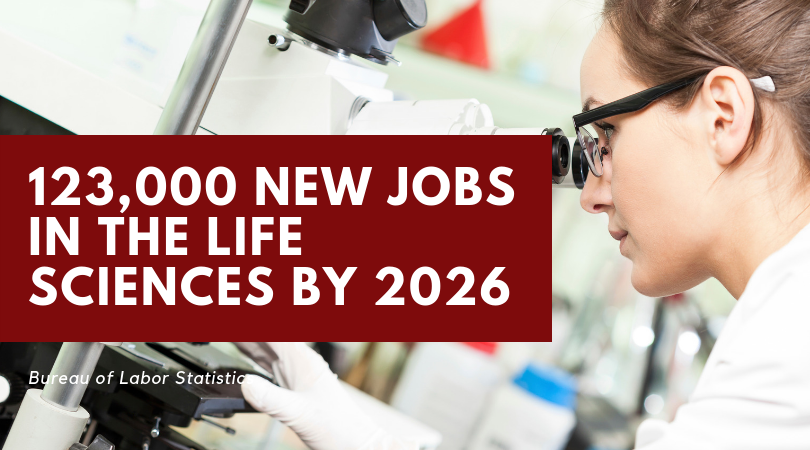What the Future Holds for Jobs in Research & Science
Posted on by Eugene Marino, Marketing Manager
Will “find a new job” be one of your New Year’s Resolutions for 2018? Here’s what the job market looks like for the scientific fields.
 According to new employment projections from the U.S. Bureau of Labor Statistics, overall employment is expected to increase by 11.5 million (7.4%) between 2016 and 2026. Job openings are expected to grow at a rate of 0.7% annually during that period—an increase over the 0.5% rate of growth during the previous decade.
According to new employment projections from the U.S. Bureau of Labor Statistics, overall employment is expected to increase by 11.5 million (7.4%) between 2016 and 2026. Job openings are expected to grow at a rate of 0.7% annually during that period—an increase over the 0.5% rate of growth during the previous decade.
Healthcare & Science Jobs
Nearly 4 million new jobs (about one-third of all new jobs) will be in the healthcare and social assistance fields, as the aging population continues to drive demand for healthcare services. By 2026, the healthcare industry will be the largest major employment sector.
According to the Bureau of Labor Statistics’ Occupational Outlook Handbook, employment in scientific fields—life, physical, and social science—is projected to grow at a faster rate than the average for all occupations—10% from 2016 to 2026 compared to 7.4% for employment across all job types. That rate of growth will represent approximately 123,000 new jobs in science by 2026.
The report predicts that this job growth will be supported by an increasing demand for expertise in the sciences, especially biomedical research, psychology, energy management, and environmental protection.
Higher Education a Plus
According to the report, employment in occupations requiring a higher level of education are on the rise. Of the 30 fastest-growing detailed occupations, 19 typically require some level of postsecondary education.
That backs up a 2016 report by the Pew Research Center, which found that employment has been rising faster in occupations requiring more preparation, including education, experience, and training. Jobs requiring more training increased 68% from 1980 to 2015, compared to an increase of 31% for jobs requiring a below average level of preparation.